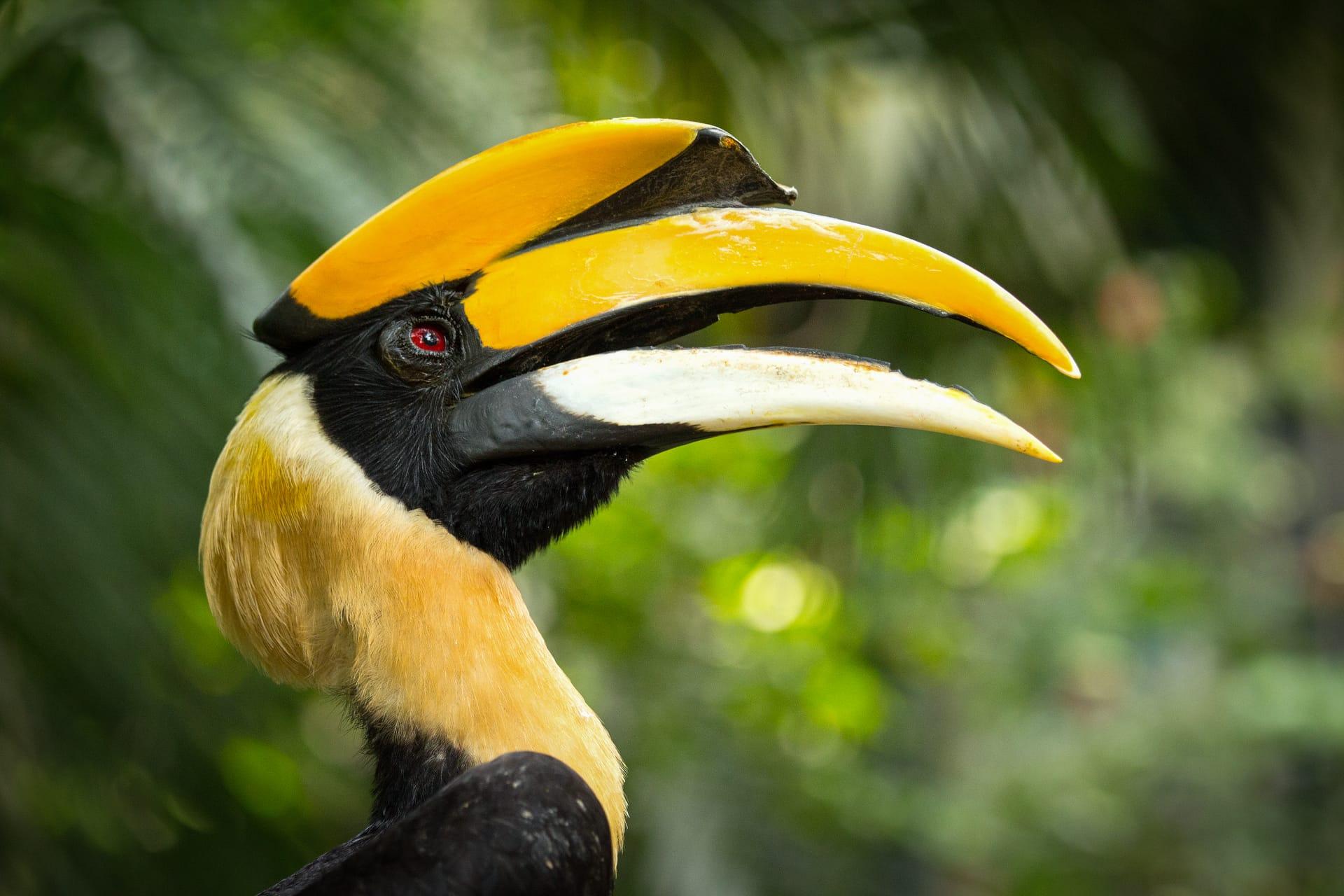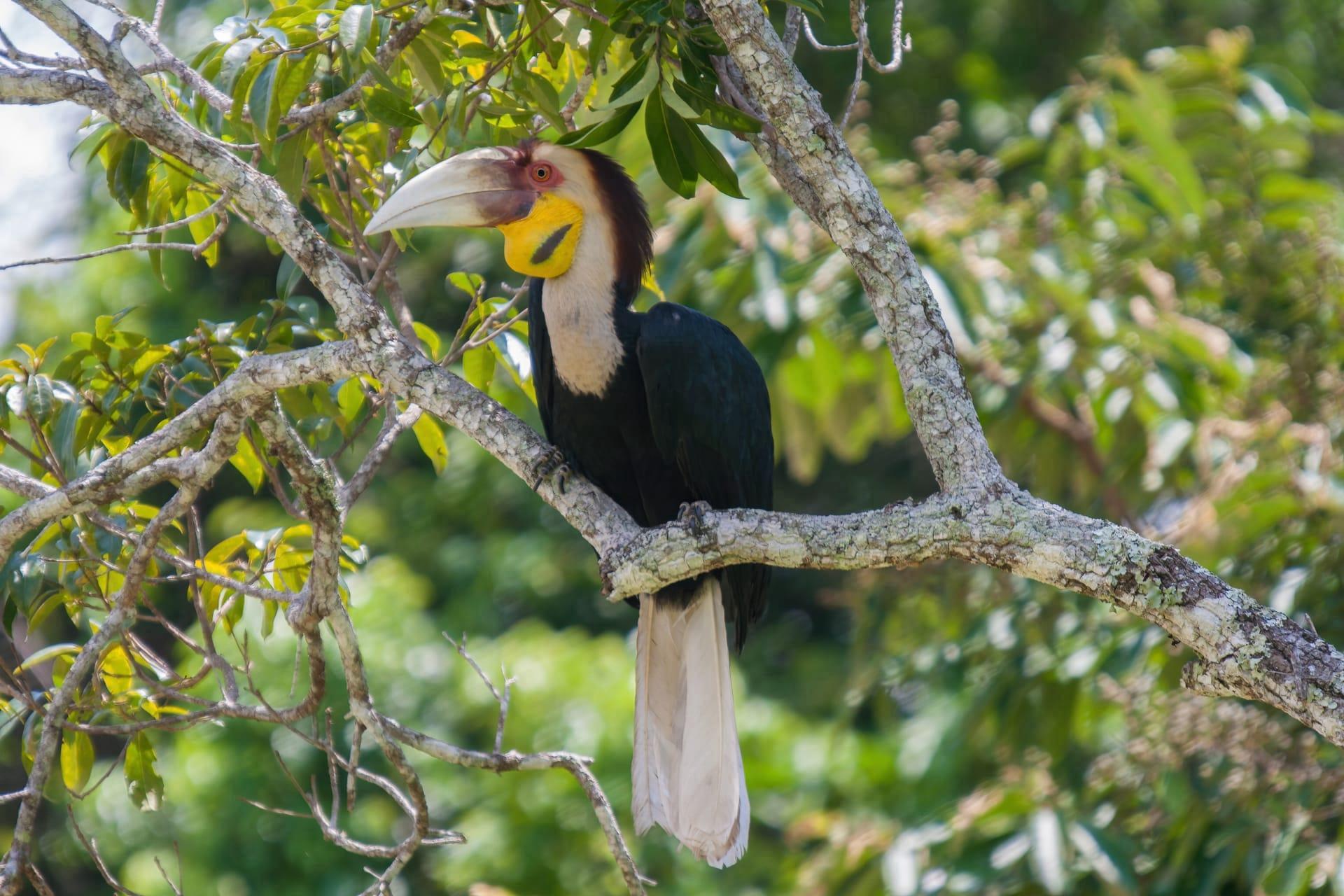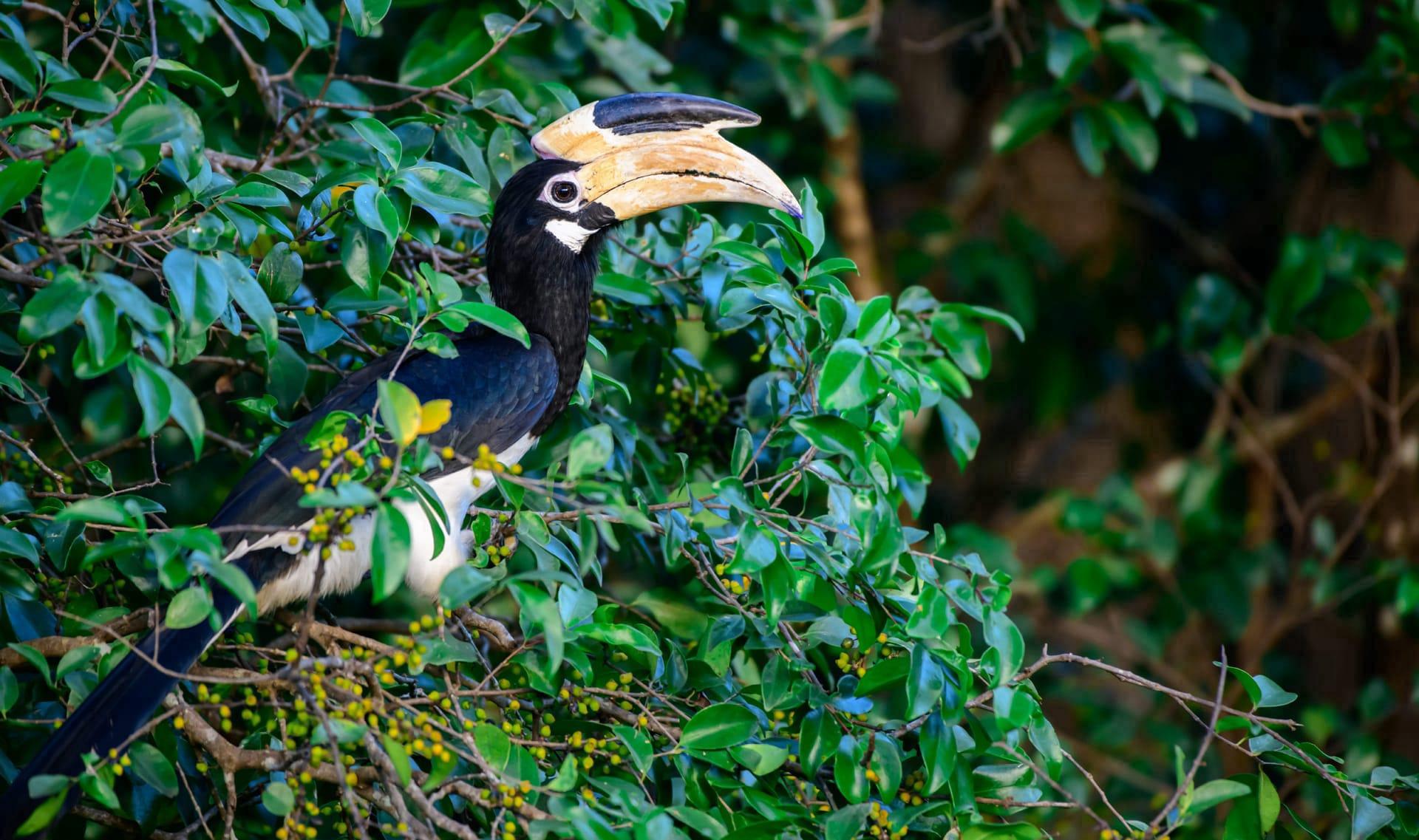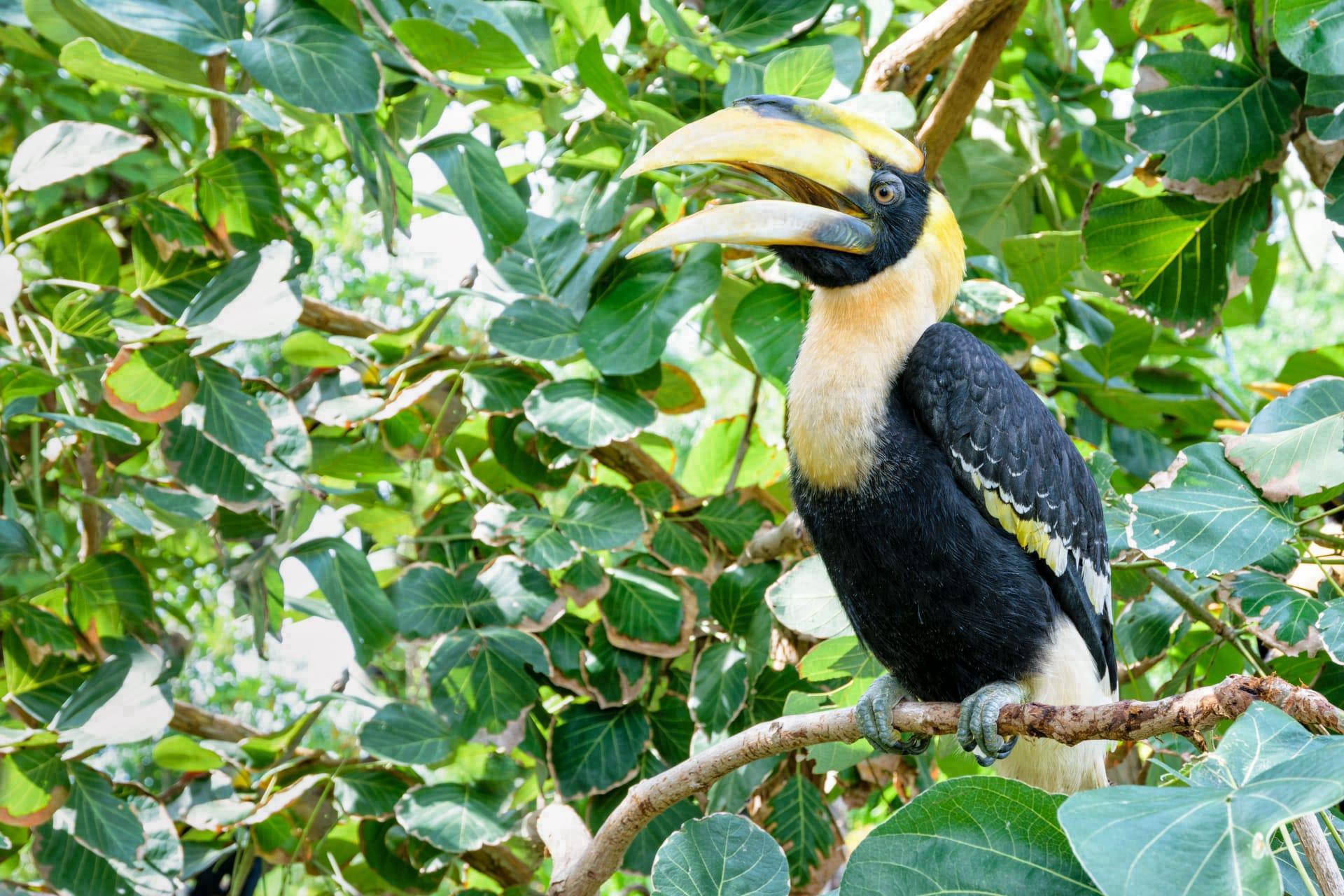Hornbill Trivia
- Home /
- Trivia Question /
- Animal /
- Hornbill Trivia
1
Question: What makes the hornbill's beak unique compared to other birds?
Answer: Hornbills possess a distinct feature: their long, down-curved beaks, which are surprisingly lightweight despite their size. This is due to an internal structure of honeycomb-like cells that makes them strong yet light, perfect for foraging without getting tired. The size of a hornbill's beak can vary, with some species like the Great Hornbill having a beak that reaches up to 10 inches in length. Additionally, the casque - a hollow, bony structure on top of the beak - is another unique feature, used in some species for amplification of calls.
Question: How do hornbills contribute to their ecosystem?
Answer: Hornbills play a crucial role in their ecosystems as seed dispersers. They feed on a variety of fruits, and their large size allows them to transport seeds over long distances. Once these seeds pass through their digestive system, they are often in a prime condition for germination, aiding in forest regeneration. The Helmeted Hornbill, for example, can disperse large seeds that smaller birds can't, making it an essential player in maintaining the diversity of tropical rainforests.

2
Question: Is it true that hornbills are monogamous and mate for life?
Answer: Yes, hornbills are generally monogamous and often form long-term pair bonds. This strong bond is vital for their unique nesting behavior, where the female seals herself inside a tree cavity, leaving just a small slit, relying on the male to feed her and the chicks. This process, seen in species like the Rhinoceros Hornbill, can last for up to several months, requiring tremendous trust and cooperation between the pair.
Question: Do hornbills use their casques for combat?
Answer: A common misconception is that hornbills use their casques solely for combat. While it's true that some species, like the Great Indian Hornbill, engage in aerial jousts using their casques during mating season, the primary functions of the casque are still under debate. Scientists believe they may play a role in mate attraction, amplifying calls, or even regulating body temperature. The casque's role varies across species, making it a multifunctional and somewhat mysterious feature.

3
Question: How do hornbills communicate with each other?
Answer: Hornbills are known for their loud and varied vocalizations, which are crucial for communication, especially in dense forests. They use a range of calls, from deep booms to high-pitched toots, to communicate over long distances, establish territories, or strengthen pair bonds. The casque acts like a natural amplifier, making their calls resonate through the forest. For example, the Black-casqued Hornbill can be heard up to half a mile away, showcasing the effectiveness of these vocalizations in dense habitats.
Question: What is the lifespan of a hornbill?
Answer: Hornbills generally have a long lifespan, especially in captivity. On average, they can live between 20 to 40 years, depending on the species. The larger species, like the Great Hornbill, tend to live longer, with some individuals recorded to have lived over 50 years in zoological settings. This longevity is attributed to their low predation risk once they reach adulthood and their robust health in a controlled environment.

4
Question: What are the primary threats to hornbill populations?
Answer: The biggest threats to hornbills are habitat loss and hunting. Deforestation for agriculture and logging significantly reduces their natural habitats, while hunting, either for their meat or the pet trade, puts additional pressure on their populations. The Helmeted Hornbill faces a unique threat due to its solid casque, which is highly valued in traditional medicine and ornamental carving, leading to illegal poaching.
Question: Can hornbills fly well despite their large size and heavy beak?
Answer: Despite their large size and seemingly cumbersome beaks, hornbills are actually quite adept fliers. Their wings are large and powerful, enabling them to maneuver effectively through dense forest canopies. The lightweight nature of their beaks, due to the internal honeycomb structure, doesn't hinder their flight. For instance, the Great Hornbill, one of the heaviest and largest-beaked species, displays remarkable agility in the air, capable of making tight turns amidst trees.

5
Question: What is the diet of a hornbill?
Answer: Hornbills are predominantly frugivorous, meaning their diet mainly consists of fruit. However, they are also opportunistic feeders and can consume a wide range of foods, including insects, small mammals, birds, and reptiles. The type of food they eat can vary depending on the species and the availability of resources in their habitat. For example, the African Grey Hornbill's diet is more varied, including insects and small animals, especially during the breeding season when protein intake is crucial.
Question: How do hornbills care for their young?
Answer: Hornbill couples display remarkable parenting strategies. The female usually seals herself inside a nest cavity in a tree, leaving only a narrow slit, where she lays and incubates the eggs. During this time, the male takes on the responsibility of feeding both the female and the chicks. This unique behavior protects the vulnerable chicks from predators. The length of the nesting period varies among species, but it can last up to four months, during which the male tirelessly forages for food for his family.